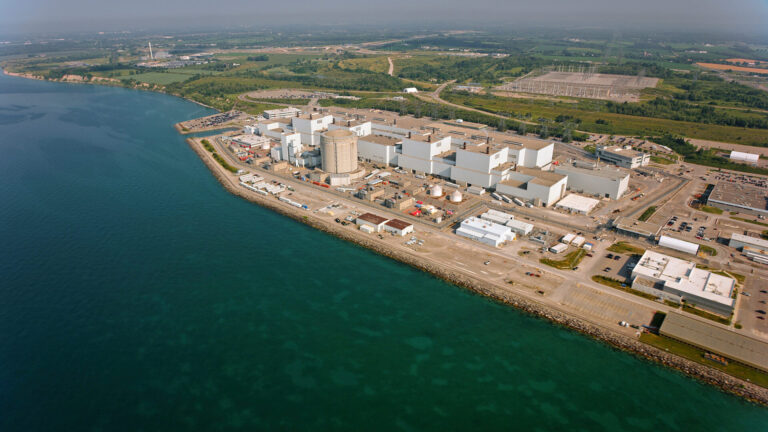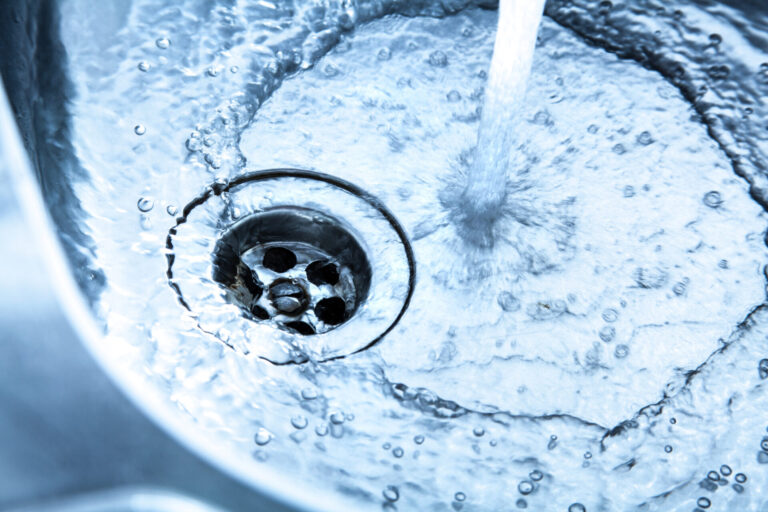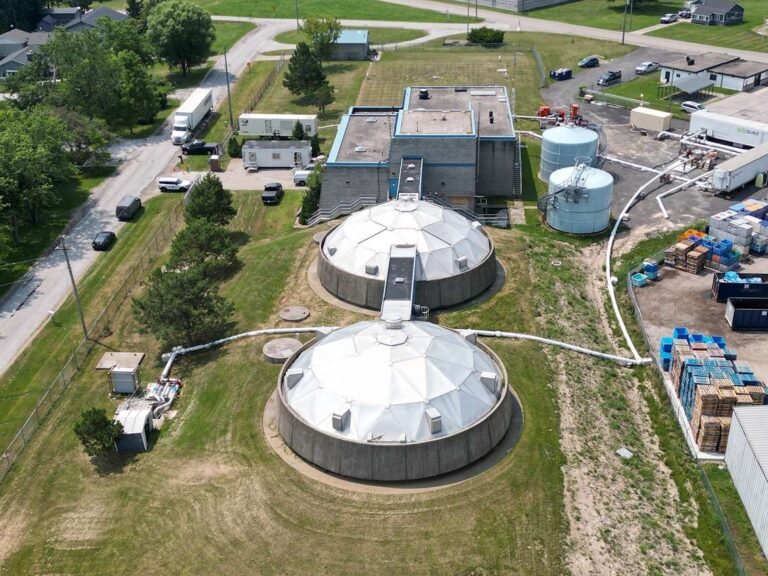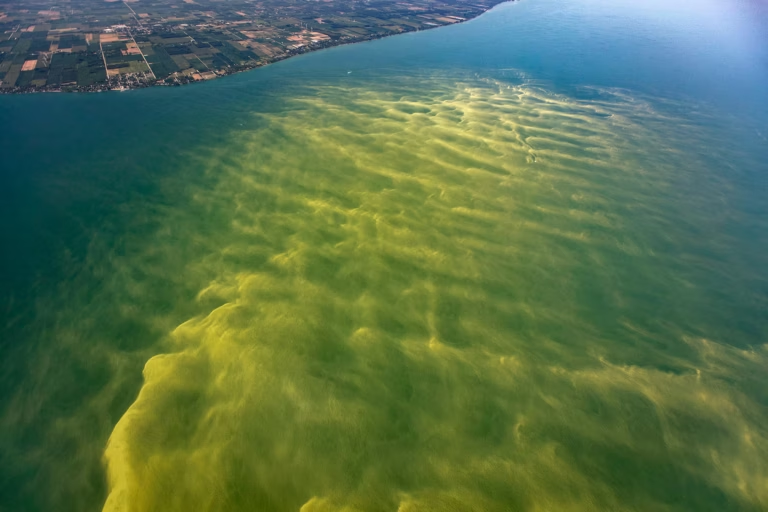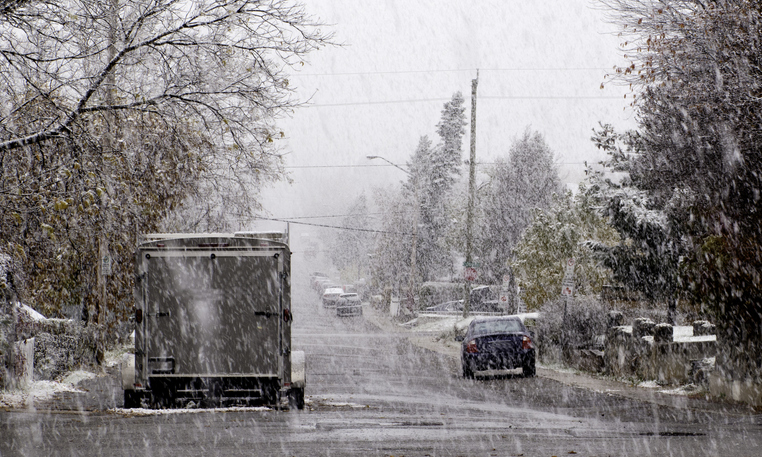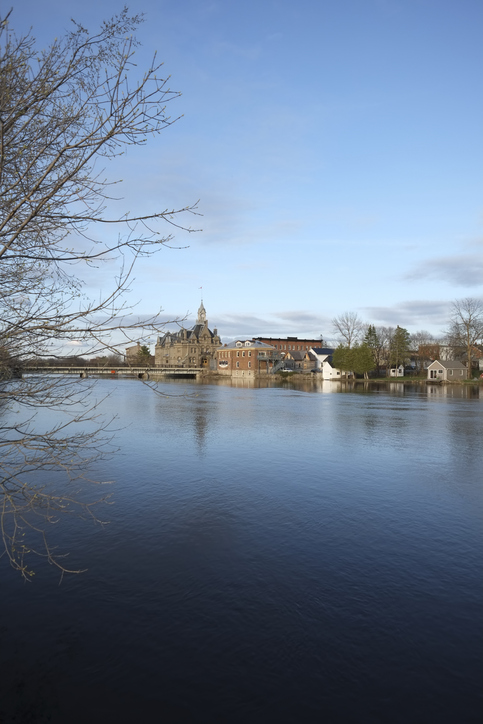As the Ontario elections loom large on the horizon, Water Canada took the opportunity to ask water industry experts to weigh in on what they think the biggest water issue is that the next Ontario government needs to focus on. It’s probably not surprising that the answers were varied, well-considered, and, of course, inspiring.
What do you think the biggest water issue Ontario needs to address is?
Infrastructure
“There are so many competing priorities in the supply, collection, and management of water in Ontario including:
- Emerging contaminants of concern in both water supply and treated wastewater discharge ranging from microplastics to per- and poly-fluoroalkyl substances (PFAS);
- Effectively leveraging Big Data from operating systems and assets to inform targeted and effective investments;
- Investing in people to operate and maintain our systems, recognizing loss of institutional knowledge with retirements and increased job mobility, as well as the need for training as facilities become more computerized (see Big Data comment above); and
- Aging infrastructure

However, the item which should be the biggest priority for the provincial government is supporting the modification of our systems to provide resilience to climate change. This permeates every aspect of the water industry from design standards that consider more intense rainfall and higher seasonal temperatures, to hardening of existing infrastructure to withstand future climate conditions. The province recently announced an investment in building, upgrading, and rehabilitating storm and wastewater infrastructure. This is an important investment as peakier storm events overwhelm existing sewers and result in sewage entering the environment in areas with combined sewers.
In addition, changing climate affects can affect the efficiency of building systems, expected service life of structures, and alter source water quality for potable systems. Tools to assess climate impacts, like the Public Infrastructure Engineering Vulnerability Committee (PIEVC) High Level Screening Guide, must become part of designing any infrastructure investment.
This is not a question of weighing risk against cost. Planning and investing in resilience now avoids expensive responses to future emergencies created by conditions that are not just probable, but inevitable.” – Susan Liver, P.Eng., PMP, is a Business Leader for Eastern Canada in Stantec’s Water Business Line

“The OSWCA believes in sustainable water and wastewater systems across Ontario. Unfortunately, much of Ontario’s core infrastructure is in urgent need of rehabilitation and replacement. The Financial Accountability Officer of Ontario estimates that the current municipal infrastructure backlog is about $52 billion. This would be the cost to bring municipal assets that require capital spending into a state of good repair.
Buried infrastructure is often ‘out of sight and out of mind’ to the public, and even elected officials. OSWCA believes investment in water and wastewater systems shouldn’t be political, we believe the sale of water should be priced to offset the cost of system maintenance and expansion.” – Patrick McManus, Executive Director, Ontario Sewer and Watermain Construction Association
“Water infrastructure in Ontario has a significant leakage problem that is creating costly inefficiencies in water systems across the province. Developing a new approach to funding strategies to mitigate this issue will be crucial to realizing improvements.
A 2021 RCCAO commissioned study found that municipalities across Ontario on average lose 10 percent of the system’s capacity to leaks, while some towns and cities leakage rate can be over 40 percent. Leakage issues in infrastructure system contribute greatly to increased costs and greenhouse gas emissions, because a lot more energy is needed to push enough water through the system to meet demand in what is already a very energy-intensive process.

To maximize the impact of water infrastructure funding, a continued focus on asset management planning is needed. The past few years have shown that sustained attention and investments in infrastructure asset management and rehabilitation are the more cost-effective options. Inadequate investments deteriorate assets further and only exasperate future funding needs, hinder economic and environmental progress, reduce service quality, and erode the value we created in our assets.
Over the last several years, Ontario municipalities have developed better water assets and more detailed knowledge about managing water systems than ever before, but challenges remain in many parts of the province. While the scope of the problem varies, the challenges faced by are fundamentally similar in nature. Small municipalities often do not have a tax base large enough to fund infrastructure projects, while large cities like Toronto have massive systems with an exponentially greater number of areas where problems may arise. Therefore, it is imperative that provincial funding continues to be provided to address ongoing improvements to water infrastructure.” – Nadia Todorova, Executive Director, Residential and Civil Construction Alliance of Ontario
Increased budget for environmental action/Legislature
“As the next Ontario government enters its new mandate, it will be faced with enormous challenges related to climate change impacts on water and wastewater infrastructure, and on aquatic ecosystems and human health.

For example, what used to be a 100-year storm event can now be expected to occur several times every 50 years. Insurance risks, sewer designs, stormwater management systems, and zoning based on flood risk will all have to adjust to this changing reality.
With higher water temperatures, dissolved oxygen will be reduced in lakes, rivers, and reservoirs. Pollution from land use will be amplified by projected increases in precipitation intensity and longer periods of low flow. Increased pollution coupled with increased temperatures will result in massive blooms of harmful algae and bacteria.
Climate change is also impacting on human health in several ways. Climate-driven infectious diseases are increasing. Water security in remote communities, especially Indigenous communities remains a serious challenge. And vector-borne diseases such as the West Nile virus and Lyme disease are increasingly prevalent further north.
The incoming Ontario government will be facing all of these challenges at a time when its capacity to deal with water and environmental issues has been seriously diminished. During the 30 years of legislative activism since Ontario enacted its Environmental Bill of Rights in 1993, environmental program budgets have been cut in half while overall governmental spending doubled in constant dollars.
That trend cannot continue. Ontario citizens expect and will demand better.” – Ralph Pentland, Member of the Forum for Leadership on Water and former Director of Water Planning and Management in the Canadian federal government.

“When we care for and invest in our waterways—wetlands, peatlands, headwater rivers, lakes and more—we are more resilient in the face of climate change. We make great strides in protecting biodiversity. We enable clean drinking water. We preserve traditions and, when done properly, we uphold Indigenous rights. Protecting our waterways is the single biggest water issue for our next government to embrace.
When I say protecting, I mean there is more that can be done beyond setting land or waterways aside for conservation purposes. I mean restoring and enacting legislation that has been designed for the purpose of protecting our waterways. I mean ensuring solid data collection so that decision-makers at every level have the evidence to support informed decisions. And I mean a public, young and old, that is informed and engaged on the issues affecting their local waterways so that they can actively contribute to their care and protection.
As Canada’s most populous province, Ontario shirked its responsibilities to water by allowing our legislation to be eroded. In so doing, we prioritized the needs for development and resource extraction over the protection of waterways, sometimes even pitting freshwater protection against providing sufficient housing options. It is a fallacy that these needs cannot all be met; good legislation is a tool to ensure that they can. Because of changes to legislation, we can expect altered flooding regimes and intensity of peak flow, the removal of important riparian habitat and degradation of water quality, and even less protection for species at risk within Ontario.
Protected waterways are good for Ontario in many, many ways. This is clear from British Columbia, where the economic impact of protecting and enhancing watersheds is valued at $5 billion annually. Ontario can embrace this, too.” – Laura Reinsborough, CEO, Ottawa Riverkeeper
The Great Lakes
“Right now, no matter if you’re a politician, business owner, resident, or visitor to Ontario, the biggest water issue is the Great Lakes. As the world’s largest freshwater reservoir, it’s home to over 40 million people, which makes it our greatest drinking water source. Protecting it should be imperative.

This year, 2022, we’ll be celebrating the 50th anniversary of the Great Lakes Water Quality Act, which coincides with our neighbours to the south also highlighting the 50th anniversary of the Clean Water Act. Making 2022 a big year to look back at what we’ve achieved in protecting our greatest resource, while also looking ahead to what needs to continue.
In that future, we see it crucial that more community science-based water monitoring and sharing of data as the way forward to better connect people to the water’s edge. As we start the UN Decade of Ecosystem, helping communities foster a relationship with their waterbody, is the greatest form of restoration and protection.
All of this starts with a push to create more access to swimmable, drinkable, fishable water for everyone.” – Mark Mattson, President of Swim Drink Fish, Waterkeeper for Lake Ontario, a water quality advisor to the International Joint Commission, a board member for the US-based Waterkeeper Alliance, and a member of Ontario’s Great Lakes Guardians Council.
Prioritizing water
“The biggest water issue to be addressed is not a problem but an opportunity; the recognition and leveraging of water as a central opportunity to forge progress.

Ontario, along with Canada and the world, is experiencing and managing the impacts of many major challenges like climate change, shifting population distributions, and declines in biodiversity and ecosystem health. While these challenges are often regional, national, or international in scope, their impacts are acutely felt and experienced at the local level — and the best solutions are frequently regional or local as a result.
There is an opportunity for the next provincial government to leverage the vital role water plays to make progress on shared challenges for our communities. Water management is at the heart of many complex challenges and alignment around water management can support our collective health and well-being through their links to water within urban and rural working landscapes, as well as protected and natural areas.
Given the central role water plays in the prosperity of communities, Canadian Water Network believes that water organizations are natural leaders for making progress on shared challenges. Water organizations have positive impacts within and beyond their communities, so approaching their support as anchors for community building is a powerful opportunity to achieve more effective prioritization of actions and investments.” – Bernadette Conant is the chief executive officer of Canadian Water Network

“Ontario’s 36 conservation authorities understand the value of water and how it’s connected to what we do in our daily lives. The biggest challenges we see on the horizon, that have the potential to threaten Ontario’s water quality and quantity, are the impacts of climate change and rapid urbanization.
As watershed-based resource management agencies, integrated watershed management is at the core of everything conservation authorities do. Watershed management is a proactive measure, which can help us face current and future challenges to potential threats, while effectively supporting growth and development opportunities for the people of Ontario.
Conservation Ontario and conservation authorities’ concerns around water are focused on flooding (including aging infrastructure) and droughts, drinking water sources, watershed streamflow, stormwater management, and rural runoff. Updated watershed science and continued support for conservation authority programs and activities such as natural hazards management, watershed stewardship, source water protection, ecological monitoring and reporting is much needed to protect our precious water resources and combat these concerns.
Ontario’s strong watershed science has been built through the combined efforts of local, provincial, and federal scientists, and other experts. Through this science, effective policy is established to safeguard water resources, protect our farmland, improve water quality in the Great Lakes and ensure safe and sustainable water sources.
This results in safe and plentiful drinking water, lakes, and rivers in which we can swim and fish, as well as healthy soils, growing forests, and protected wetlands, and ultimately healthy ecosystems for us all to live and play in.” – Kim Gavine, General Manager, Conservation Ontario

“Since the March 2019, Health Canada release of a revised lead guideline (with a new lower) limit of 5ug/L for lead in drinking water there has been no policy or regulatory response by the Ontario government. So, despite the current suite of lead control measures in place in Ontario, the health risks to water consumers (and particularly vulnerable populations) from lead in drinking water remain, with no apparent end in sight.
OMWA launched a 3-part webinar series in May-June of 2021 focussing on the issue of lead in drinking water and followed up with an online survey to gauge interest in remedying this situation from Ontario water professionals.

Given the importance of the lead file to our informed membership, the OMWA believes that the single biggest water issue that the next Ontario government needs to address is to reduce health risks to water consumers by eliminating all lead service lines in Ontario while ensuring exposures to the population are at or below the Health Canada’s recommended lead drinking water standard during the elimination period.”
– Kathy Vassilakos, OMWA Vice President, City of Stratford Councillor & Co-Chair of Lead Working Group, and Cheryl Beam, OMWA Board Member, City of Greater Sudbury & Co-Chair of Lead Working Group
Watershed management
“We believe that the dual crises of climate change and biodiversity loss needs to be a top priority for all Canadians. We also believe that wetland conservation and integrated watershed management can serve an important role in mitigating these issues.

Natural infrastructure can provide critical wildlife habitat while offering flood attenuation benefits and a host of other positive outcomes from improved water quality to carbon sequestration. In order to accomplish this, we need a comprehensive wetland policy and to update our land-use planning guidance.
We recommend modernizing the Ontario Wetland Evaluation System (OWES) to include greater consideration and weighting around regulating eco-system services, particularly as it relates to climate change mitigation and adaptation. We would also like to see the implementation of a provincial framework for wetland offsetting that ensures the protection and upstream integrity of priority wetlands based on an inclusive evaluation and considers the entirety of the impact when evaluating compensation towards a goal of net ecological gain.” – Lynette Mader, Manager of Ontario Operations, Ducks Unlimited Canada
Clean drinking water
“Indigenous peoples across Canada have an inherent right to clean drinking water, yet as of April 2022, there are 41 First Nation communities on drinking water advisories in Ontario alone. Many factors contribute to the existence of these long-term boil water advisories such as ongoing maintenance of the water treatment plants, difficulty obtaining parts when they become broken or old, lack of available water operators in the community, and much more.

The reality is that there is no band-aid solution or one size fits all approach to lifting the advisories. At the Ontario First Nations Technical Services Corporation, our Circuit Rider Trainer, and HUB Programs work on training First Nations Water Operators across the province, as well as providing operator assistance to 22 communities that are not affiliated with a Tribal Council for technical support.
Through the work we have been doing with our Circuit Rider Trainer Program (CRTP), we’ve been able to help First Nations water operators upgrade their training and maintain their licenses to operate the water treatment plant in their communities. With OFNTSC’s Engineering service, our HUB program has been able to assist with lifting 4 long-term drinking water advisories since 2020. We anticipate that three more will be lifted within the next month. We work very closely with our funders, Indigenous Services Canada, to be able to provide these services on a continual basis and are grateful for their support.” – Melanie Debassige, MBA, ICD.D Executive Director, Ontario First Nations Technical Services Corporation



